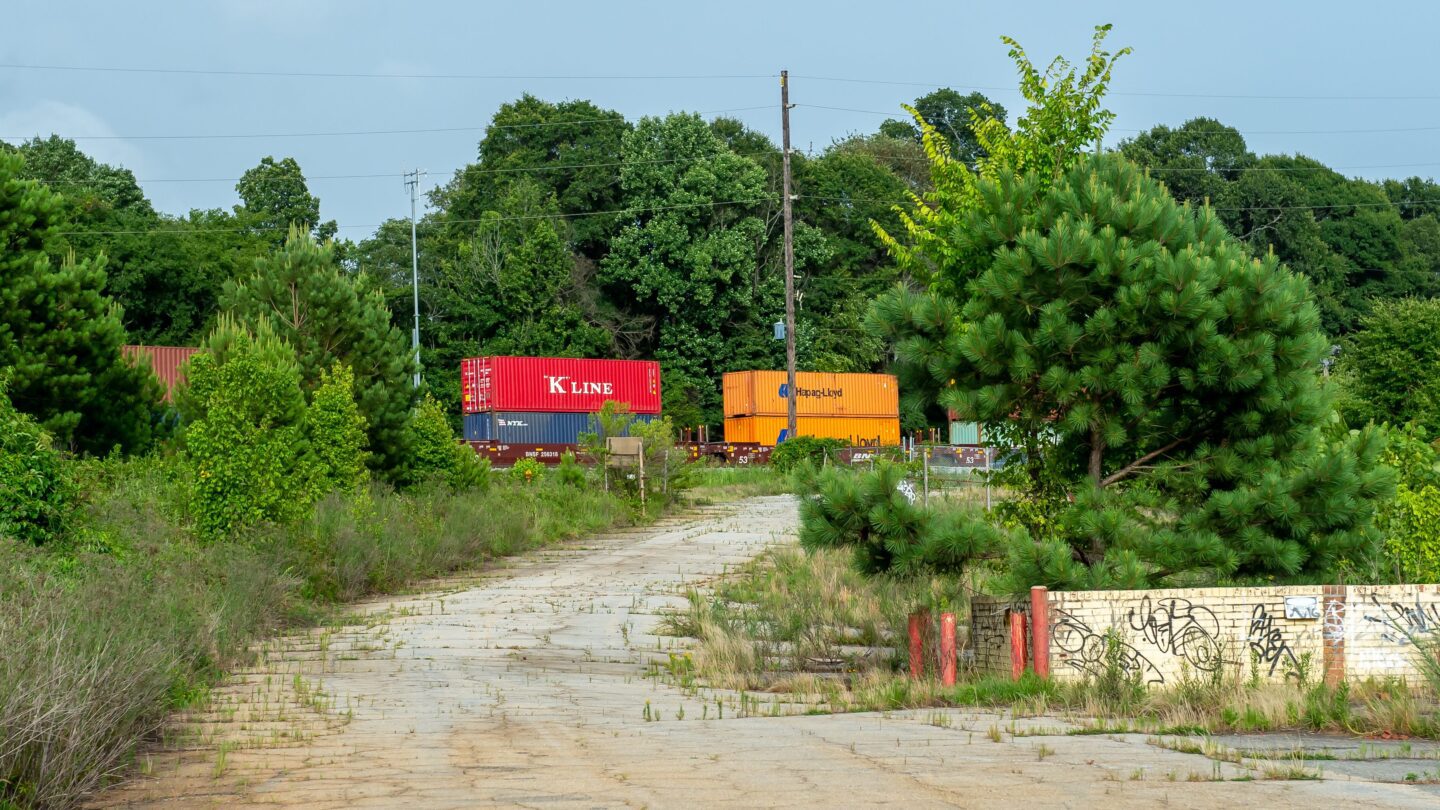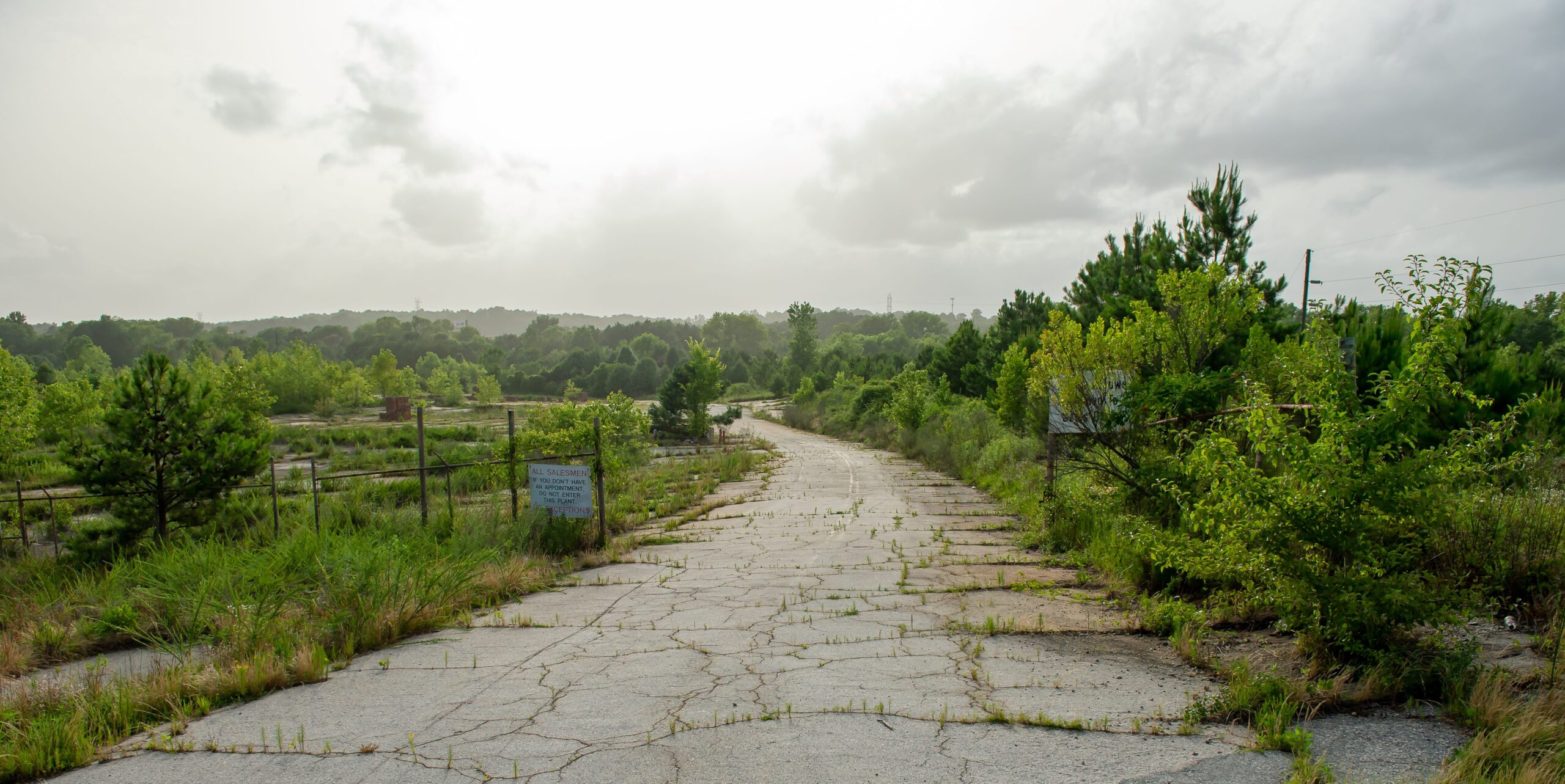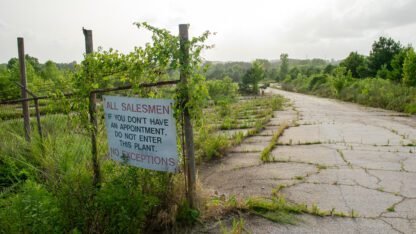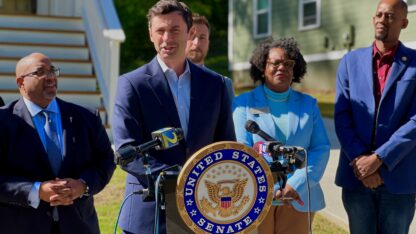Amid debates about memorials, advocates push to remember Atlanta’s forced laborers
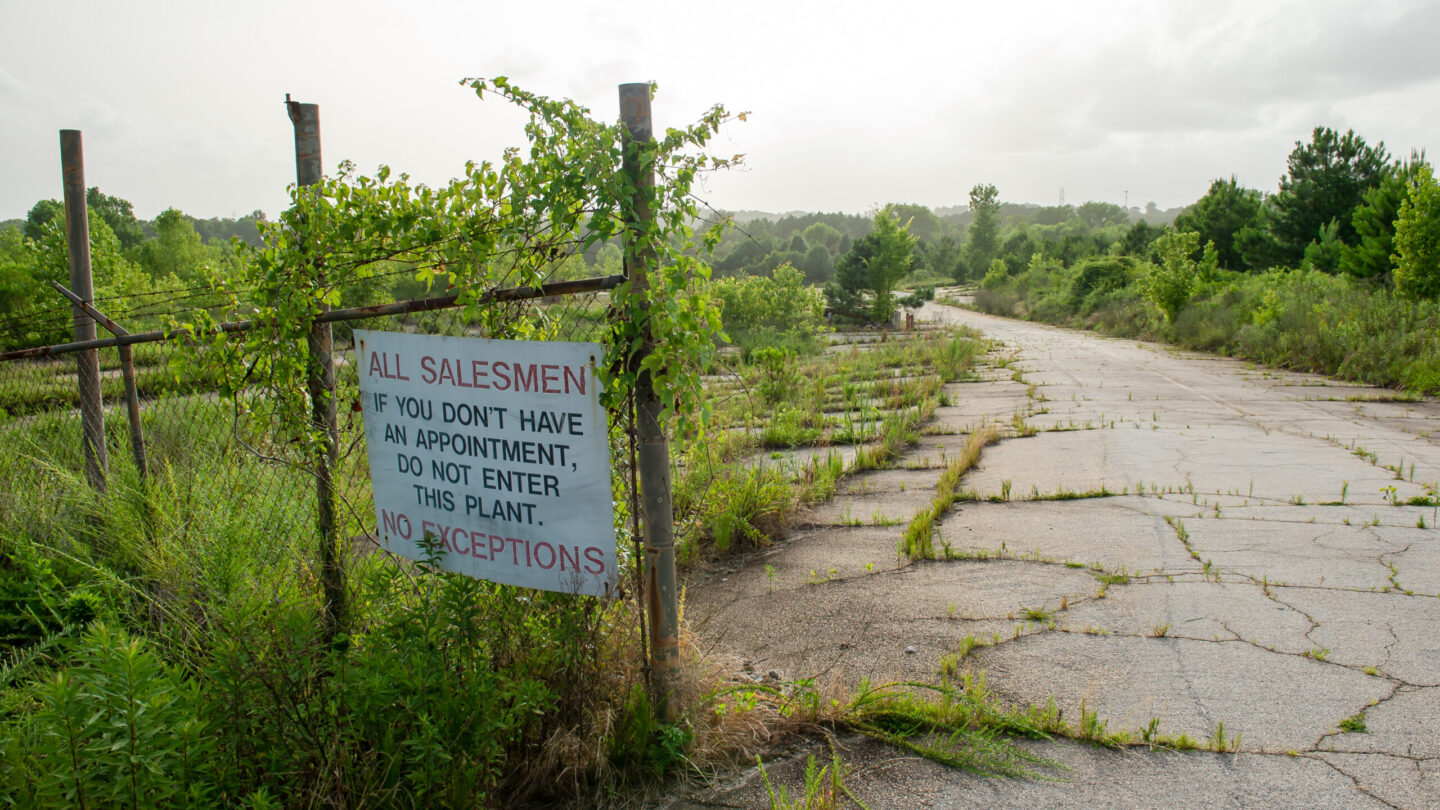
The entrance to the former site of the Chattahoochee Brick Company, located on the western edge of Atlanta at the confluence of Proctor Creek and the Chattahoochee River, is shown.
BITA HONARVAR / Special to wabe
After the Civil War, Atlanta and much of the South needed to be rebuilt.
One of the places that helped make that happen was the Chattahoochee Brick Co., which produced millions of bricks at its location on the Chattahoochee River in northwest Atlanta. Atlanta homes are built of those bricks, and Atlanta’s roads are paved with them. James English, an Atlanta mayor who had also been a captain in the Confederate Army, owned the factory.
And Chattahoochee Brick – like other factories, farms and mines around the South – used convict labor.
At a time when people are reckoning – again – with the monuments that have been built to tell the nation’s story, some are pushing for a memorial to be built at the site of the old brick factory, to honor those laborers.
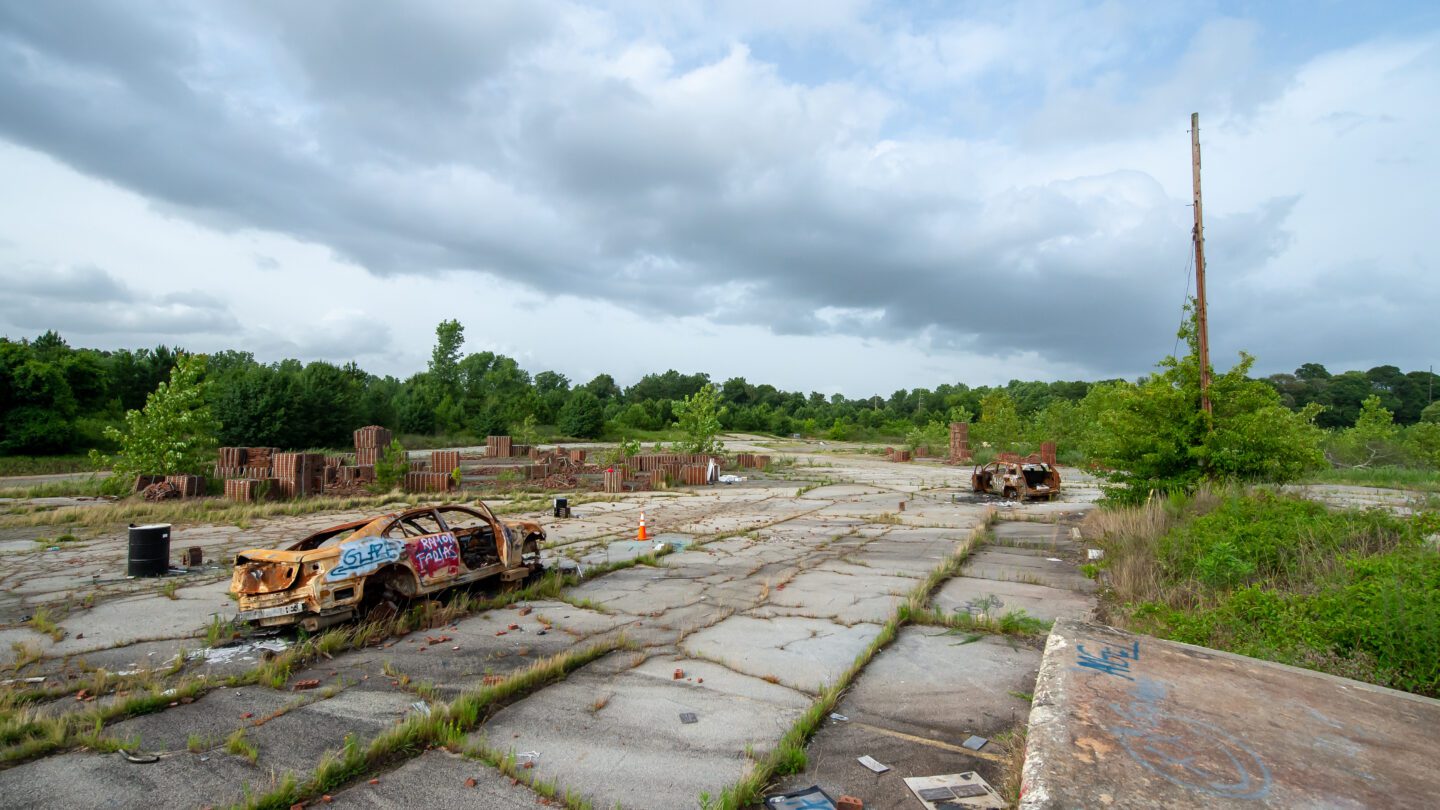
Under the convict leasing system, private companies would lease people from a state, county or city. The prisoners would live and work, unpaid, at the factory.
“The modern building of the New South comes out of these bricks, and comes out of the skill of these forced workers, these prisoners,” said Mary Ellen Curtin, a history professor at American University, and author of the book, “Black Prisoners and Their World.”
Companies like Chattahoochee Brick made a lot of money from this labor. English’s descendants were involved in banking and finance. Most of the prisoners were Black men, though there were some white men, and teenagers and women, too.
And the conditions were terrible.
“The private companies have complete control over the everyday lives of these prisoners,” said Curtin. “You had the most heinous kinds of torture practiced on people as a way of intimidating people into complying with this terrible system of forced labor. But whipping was the most common practice, and it was used ubiquitously in the New South.”
Whipping was common at the Chattahoochee Brick Factory. Douglas Blackmon, author of the Pulitzer Prize-winning book, “Slavery by Another Name,” described people there being whipped so severely that they died. The prisoners lived in filthy barracks and ate rotting food.
“Chattahoochee Brick was a place of absolute horror,” Blackmon told WABE in 2016.
“It’s a chapter of our history that most people don’t know. And then the thing is, it’s in our backyard,” said Donna Stephens, co-chair of the Proctor Creek Stewardship Council, an environmental group on Atlanta’s Westside.
“Atlanta is full of places that everybody knows about,” Stephens said. “Where Dr. King lived as a boy. We know Kennesaw Mountain. We know where the battles were. But we don’t know about convict leasing.”
Now, there’s not much of anything at the old factory site near I-285. There are no buildings. Weeds grow through cracks in the cement, and piles of bricks are leftover from a more recent factory. There are burned-out cars and an open and empty gun safe.
A few years ago, a South Carolina company bought part of the lot. It planned to build an oil shipping terminal at the location, which is zoned industrial and adjacent to railroad tracks. But the city of Atlanta denied the company a permit it needed for the project, and advocates had hoped the city would take the land over.
But not much seems to have happened at the property since the permit was denied.
“We’ve got to close the deal here this time,” said Bob Kent, who lives in nearby Whittier Mill Village.
He believes some kind of work could be beginning on the property. He said there have been engineers and surveyors around, and a new security guard.
So he and Donna Stephens are advocating – again – for the city of Atlanta to buy this land, to make it into a memorial, a park, and potentially some less-industrial development like housing or stores.
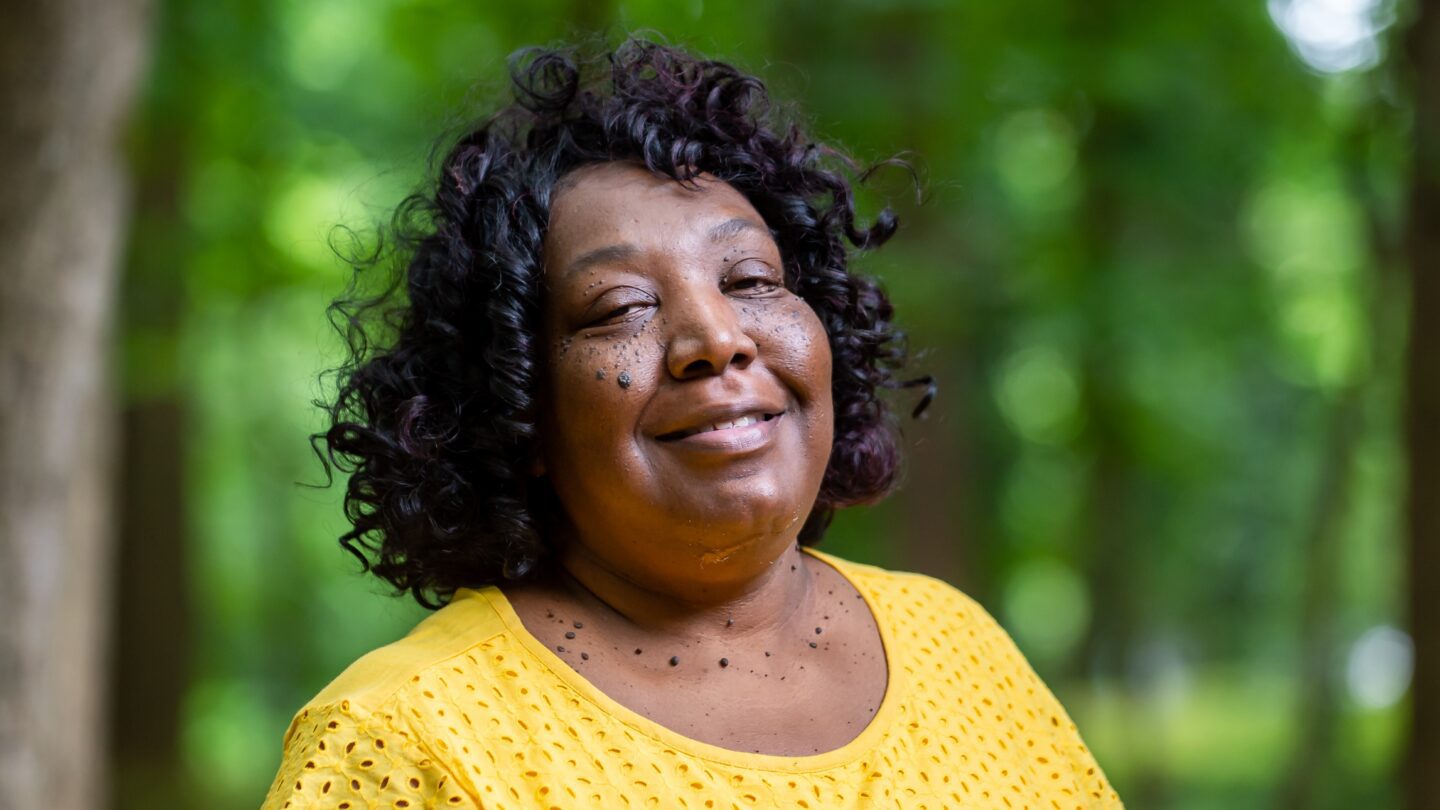
“We’re not going to stop until everything is resolved,” he said.
Atlanta City Councilman Dustin Hillis represents the area, and he also said he would like to see a memorial.
“Just to remember what occurred there, so that we don’t ever repeat that,” he said.
Georgia officially outlawed convict leasing more than a century ago. But we’re still living with its legacy, said University of Virginia historian Talitha LeFlouria. She said the people who were forced to work in that system should be remembered.
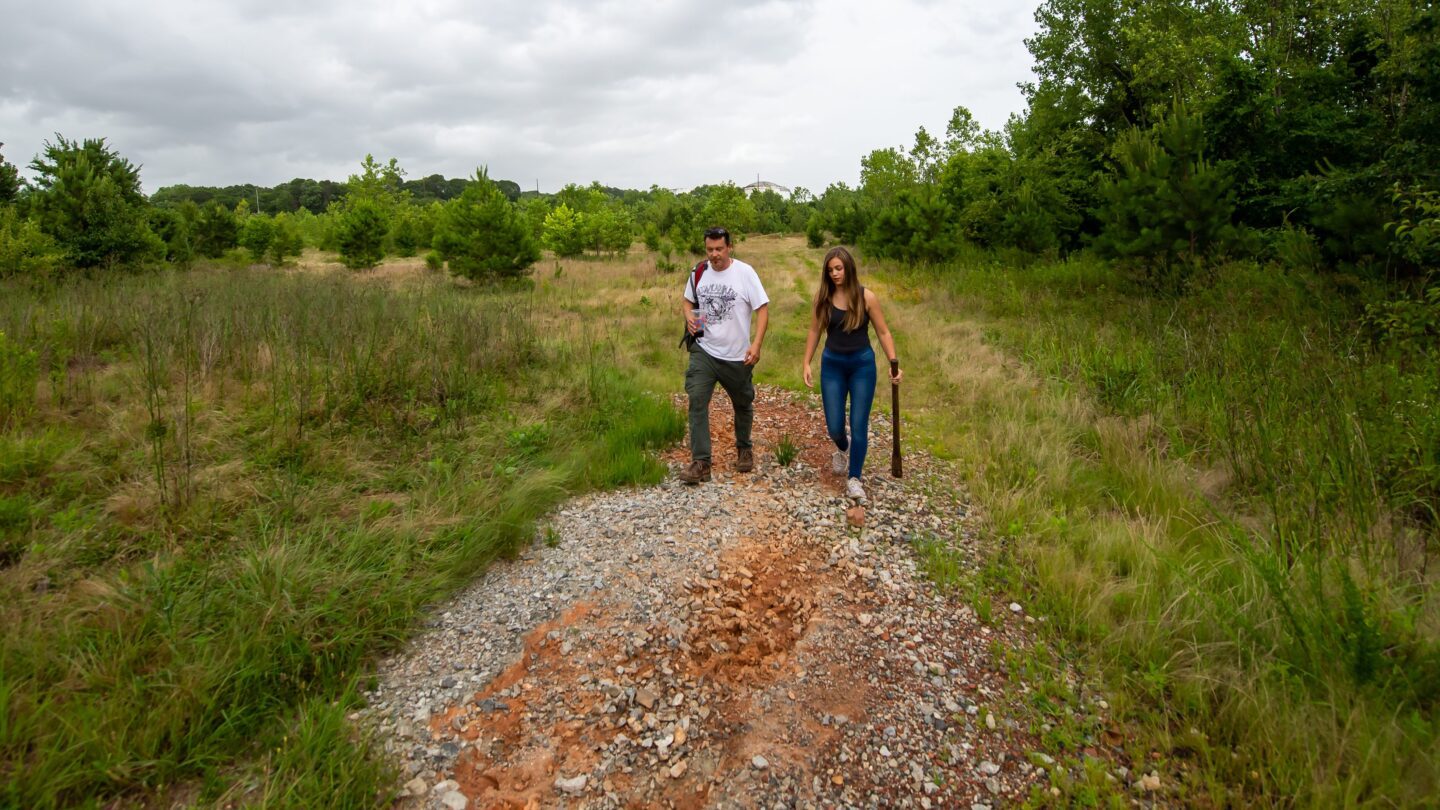
“When we think about the history of the United States, and we think about who built the United States, we have to include incarcerated laborers in that history, particularly when we’re talking about the history of the South,” she said.
But that history isn’t well-known.
“I think it’s really weird that nothing’s brought up about anything like this,” said Kayli Stewart, a ninth grader at Kennesaw Mountain High School.
She’s been visiting the Chattahoochee Brick Co. site with her dad and her brother. They’re history buffs and like to explore together. They found old tunnels that they believe were part of the Chattahoochee Brick Co.’s kilns.
She said it was odd, seeing pieces of the history firsthand while she was taking eighth-grade Georgia History and not learning about it at school.
The talk of building a memorial to the victims of convict leasing comes as Confederate statues and monuments are being reconsidered, moved or taken down. And that conversation gained momentum again after George Floyd, who was Black, was killed by a white police officer.
LeFlouria, the author of “Chained in Silence,” a book focused on women in the convict-leasing system, said the convict-leasing history is connected to those current conversations. And she said while there are hundreds of monuments to the Confederacy, she doesn’t know of any commemorating the people who worked under the convict-leasing system.
“We don’t have to be ashamed of people who were victimized during this system,” she said. “These people may be America’s shame, but we don’t have to be ashamed of them.”
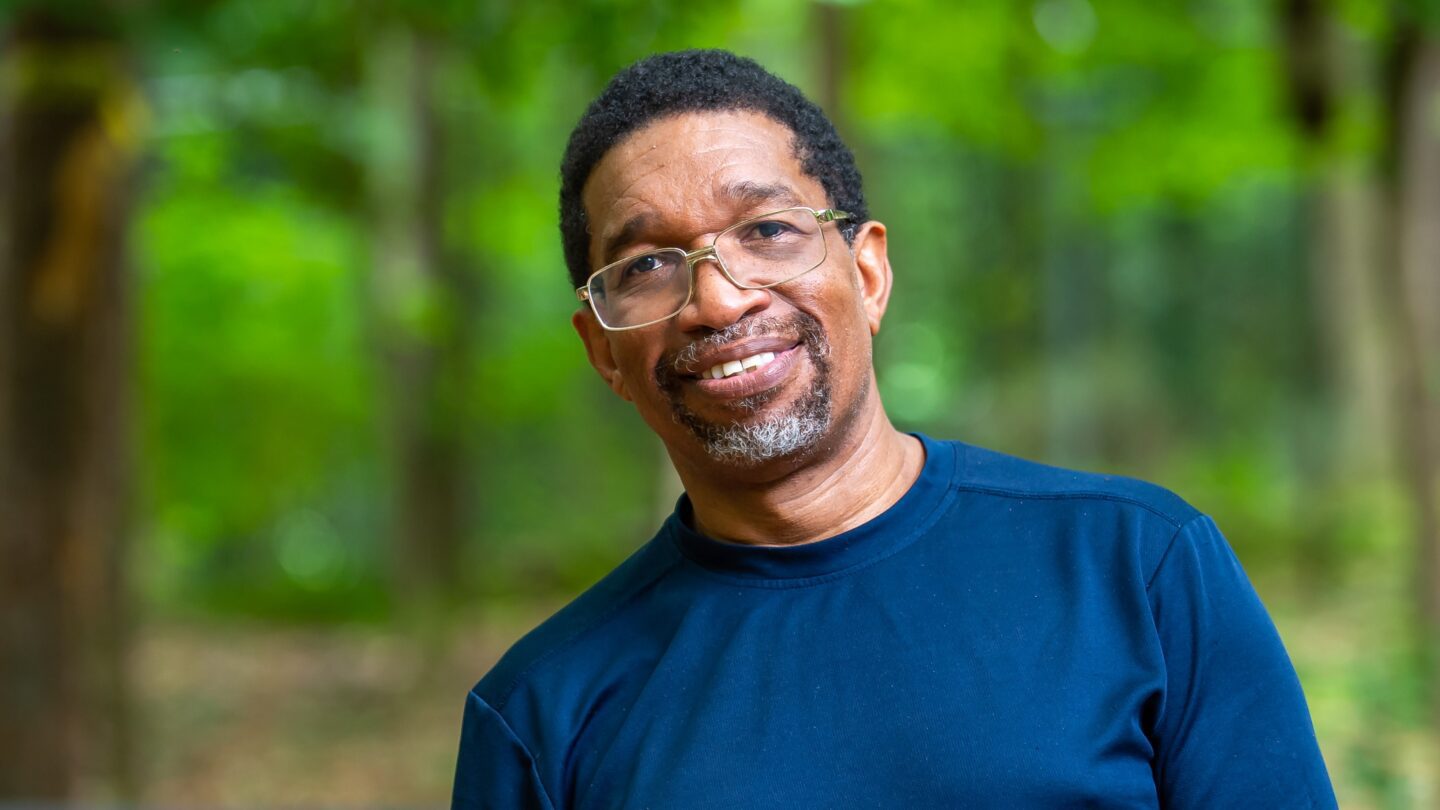
Atlanta environmental scientist and advocate Darryl Haddock with the West Atlanta Watershed Alliance said he can imagine a memorial park at the location.
“I do think there’s an opportunity here to work on, how do we think about preserving history, the good history, the not so good history, in a way that uplifts and starts to heal the country,” he said.
The property is privately owned, and the company did not respond to WABE’s request for comment. The land could be sold or developed.
Advocates are hoping the city will step in.
